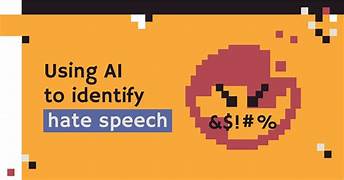The Challenges of AI in Detecting and Preventing Hate Speech
Hate speech remains a pervasive problem in today’s digital world, fueling discrimination, division, and even violence. While Artificial Intelligence (AI) has emerged as a powerful tool to combat hate speech online, its implementation is fraught with challenges. This article explores the complexities of using AI to detect and prevent hate speech, the limitations of current technologies, and potential strategies to overcome these obstacles.
Understanding Hate Speech
Hate speech is defined as communication that vilifies or discriminates against individuals or groups based on attributes such as race, religion, gender, sexual orientation, or disability. Its detection is inherently subjective, as interpretations of what constitutes hate speech vary widely across cultures, languages, and contexts.
1. Challenges in Defining and Contextualizing Hate Speech
One of the primary challenges in AI-driven hate speech detection is the ambiguity surrounding its definition. Words and phrases considered offensive in one context may be innocuous in another. For example, reclaiming slurs within marginalized communities or using sarcasm can confuse AI systems.
Key Issues:
- Cultural Nuances: AI models often struggle to understand cultural or regional differences in language use.
- Context Dependence: The same phrase can be harmful in one setting and harmless in another, making detection context-sensitive.
- Evolving Language: Hate speech evolves rapidly, with users creating coded language or new terms to evade detection systems.
2. Technical Limitations of AI Systems
AI systems rely on machine learning and natural language processing (NLP) to identify hate speech. However, these technologies have inherent limitations that reduce their effectiveness.
Key Technical Challenges:
- Data Quality: Training AI models requires large datasets of labeled hate speech, which are often biased or incomplete.
- False Positives and Negatives: AI systems frequently misidentify benign content as harmful (false positives) or fail to flag harmful content (false negatives), leading to both censorship and under-enforcement.
- Multilingual Support: Detecting hate speech in multiple languages and dialects is a significant hurdle, as most AI models are trained primarily on English-language data.
- Image and Video Content: Hate speech is not limited to text; detecting harmful content in memes, videos, and other multimedia formats presents additional technical challenges.
3. Ethical Concerns in AI Deployment
The use of AI in hate speech detection raises ethical questions about privacy, free speech, and algorithmic bias.
Key Ethical Issues:
- Free Speech vs. Censorship: Striking a balance between removing harmful content and protecting free expression is a contentious issue. Overzealous AI systems risk censoring legitimate discourse, especially around sensitive or controversial topics.
- Bias in Algorithms: AI models often inherit biases from their training data, leading to disproportionate enforcement against specific groups or viewpoints.
- Transparency and Accountability: The opacity of AI decision-making processes can make it difficult to hold platforms accountable for errors or biases in hate speech moderation.
4. Adversarial Manipulation
Bad actors continuously develop strategies to bypass AI-based detection systems, creating an arms race between hate speech creators and technology developers.
Key Challenges:
- Coded Language: Users employ euphemisms, misspellings, or symbolic representations to mask hateful content.
- Adversarial Attacks: Sophisticated attackers manipulate AI models by introducing subtle changes that prevent detection.
- Rapid Adaptation: Hate speech evolves quickly, requiring AI systems to be constantly updated to stay effective.
5. Impact on Marginalized Communities
While AI aims to protect marginalized communities, its shortcomings can inadvertently harm these groups.
Key Concerns:
- Under-Protection: AI systems may fail to detect nuanced forms of hate speech, leaving harmful content unaddressed.
- Over-Policing: Disproportionate enforcement against specific communities can silence voices and perpetuate systemic inequities.
- Psychological Impact: Ineffective moderation can exacerbate the psychological toll of exposure to online hate speech for victims.
6. Strategies for Overcoming Challenges
To improve the effectiveness and fairness of AI-driven hate speech detection, several strategies can be employed:
Enhancing Data Quality and Diversity:
- Build more representative training datasets that account for cultural, linguistic, and contextual diversity.
- Engage diverse stakeholders, including marginalized communities, in the dataset creation process to reduce bias.
Improving Contextual Understanding:
- Develop AI models capable of understanding context through advanced NLP techniques and multimodal analysis.
- Incorporate user feedback to refine AI systems and improve accuracy over time.
Combining AI with Human Oversight:
- Employ human moderators to review flagged content and provide nuanced assessments that AI cannot achieve alone.
- Use hybrid approaches where AI filters potential hate speech for human review, balancing efficiency with accuracy.
Addressing Adversarial Tactics:
- Continuously monitor and adapt to emerging trends in hate speech language and tactics.
- Leverage community reporting systems to identify and address coded language and other manipulative strategies.
Ethical AI Development:
- Promote transparency by making AI decision-making processes understandable and accountable.
- Establish ethical guidelines for AI deployment, ensuring fair treatment of all users and protecting free speech.
7. Future Directions in AI and Hate Speech Prevention
The future of AI in combating hate speech lies in collaboration, innovation, and ethical responsibility. Emerging technologies, such as explainable AI (XAI) and federated learning, offer promising avenues for improving detection capabilities while safeguarding user rights.
Key Trends:
- Explainable AI: Developing models that can justify their decisions will enhance trust and accountability in hate speech detection systems.
- Federated Learning: Decentralized AI training approaches can improve data privacy and reduce biases by allowing models to learn from diverse datasets without centralizing user data.
- Community Engagement: Actively involving users, researchers, and policymakers in the development of AI systems will ensure more inclusive and effective solutions.
Conclusion
While AI offers significant potential to detect and prevent hate speech, it is not a panacea. The challenges of defining hate speech, technical limitations, ethical concerns, and adversarial manipulation must be addressed to create fair and effective systems. By combining advanced technology with human oversight, ethical development, and collaborative approaches, AI can become a powerful tool in fostering safer online environments. However, this requires ongoing innovation, vigilance, and a commitment to protecting both free speech and vulnerable communities.


